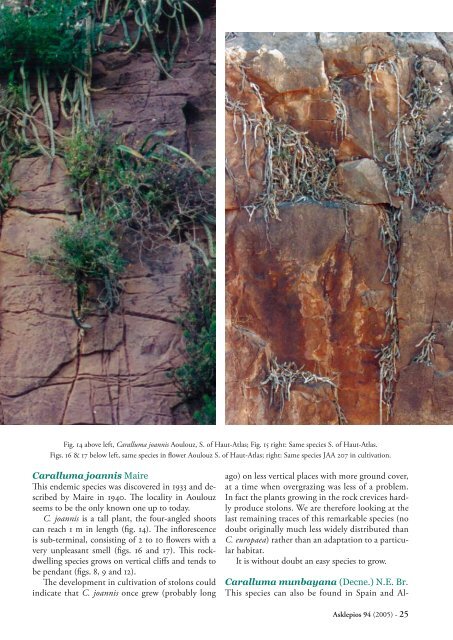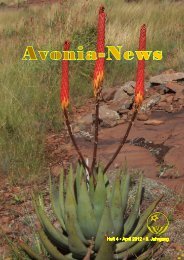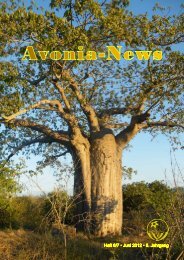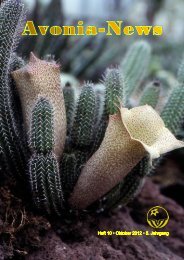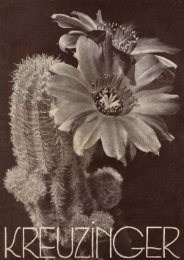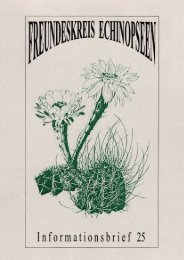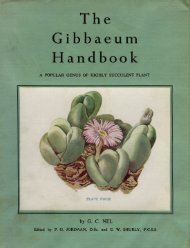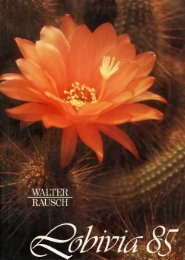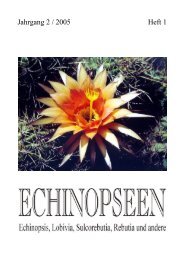Moroccan Stapeliads
Moroccan Stapeliads
Moroccan Stapeliads
You also want an ePaper? Increase the reach of your titles
YUMPU automatically turns print PDFs into web optimized ePapers that Google loves.
Fig. 14 above left, Caralluma joannis Aoulouz, S. of Haut-Atlas; Fig. 15 right: Same species S. of Haut-Atlas.<br />
Figs. 16 & 17 below left, same species in flower Aoulouz S. of Haut-Atlas; right: Same species JAA 207 in cultivation.<br />
Caralluma joannis Maire<br />
This endemic species was discovered in 1933 and described<br />
by Maire in 1940. The locality in Aoulouz<br />
seems to be the only known one up to today.<br />
C. joannis is a tall plant, the four-angled shoots<br />
can reach 1 m in length (fig. 14). The inflorescence<br />
is sub-terminal, consisting of 2 to 10 flowers with a<br />
very unpleasant smell (figs. 16 and 17). This rockdwelling<br />
species grows on vertical cliffs and tends to<br />
be pendant (figs. 8, 9 and 12).<br />
The development in cultivation of stolons could<br />
indicate that C. joannis once grew (probably long<br />
ago) on less vertical places with more ground cover,<br />
at a time when overgrazing was less of a problem.<br />
In fact the plants growing in the rock crevices hardly<br />
produce stolons. We are therefore looking at the<br />
last remaining traces of this remarkable species (no<br />
doubt originally much less widely distributed than<br />
C. europaea) rather than an adaptation to a particular<br />
habitat.<br />
It is without doubt an easy species to grow.<br />
Caralluma munbayana (Decne.) N.E. Br.<br />
This species can also be found in Spain and Al-<br />
Asklepios 94 (2005) -


